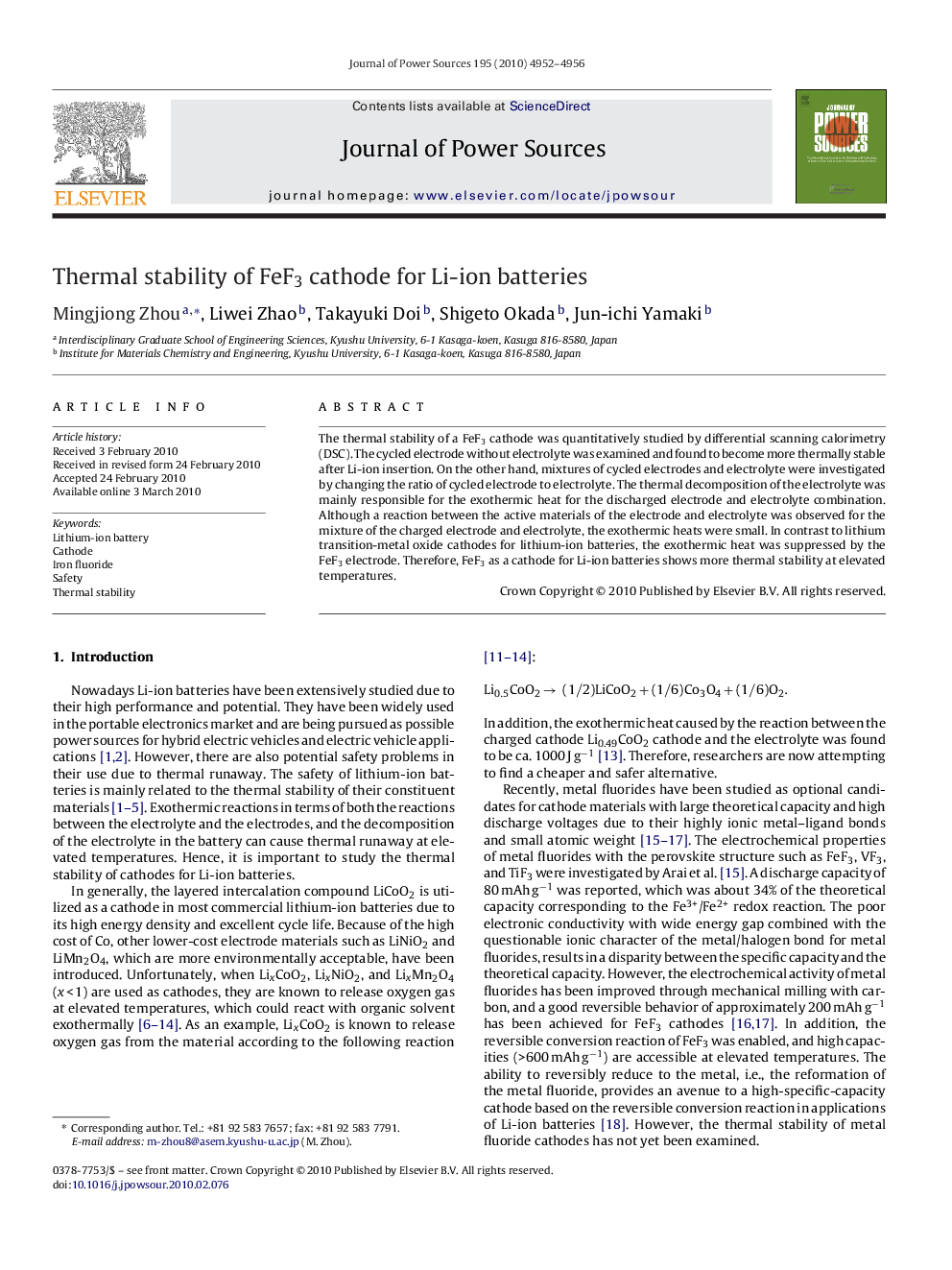| Article ID | Journal | Published Year | Pages | File Type |
|---|---|---|---|---|
| 1290116 | Journal of Power Sources | 2010 | 5 Pages |
The thermal stability of a FeF3 cathode was quantitatively studied by differential scanning calorimetry (DSC). The cycled electrode without electrolyte was examined and found to become more thermally stable after Li-ion insertion. On the other hand, mixtures of cycled electrodes and electrolyte were investigated by changing the ratio of cycled electrode to electrolyte. The thermal decomposition of the electrolyte was mainly responsible for the exothermic heat for the discharged electrode and electrolyte combination. Although a reaction between the active materials of the electrode and electrolyte was observed for the mixture of the charged electrode and electrolyte, the exothermic heats were small. In contrast to lithium transition-metal oxide cathodes for lithium-ion batteries, the exothermic heat was suppressed by the FeF3 electrode. Therefore, FeF3 as a cathode for Li-ion batteries shows more thermal stability at elevated temperatures.
